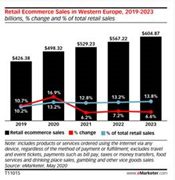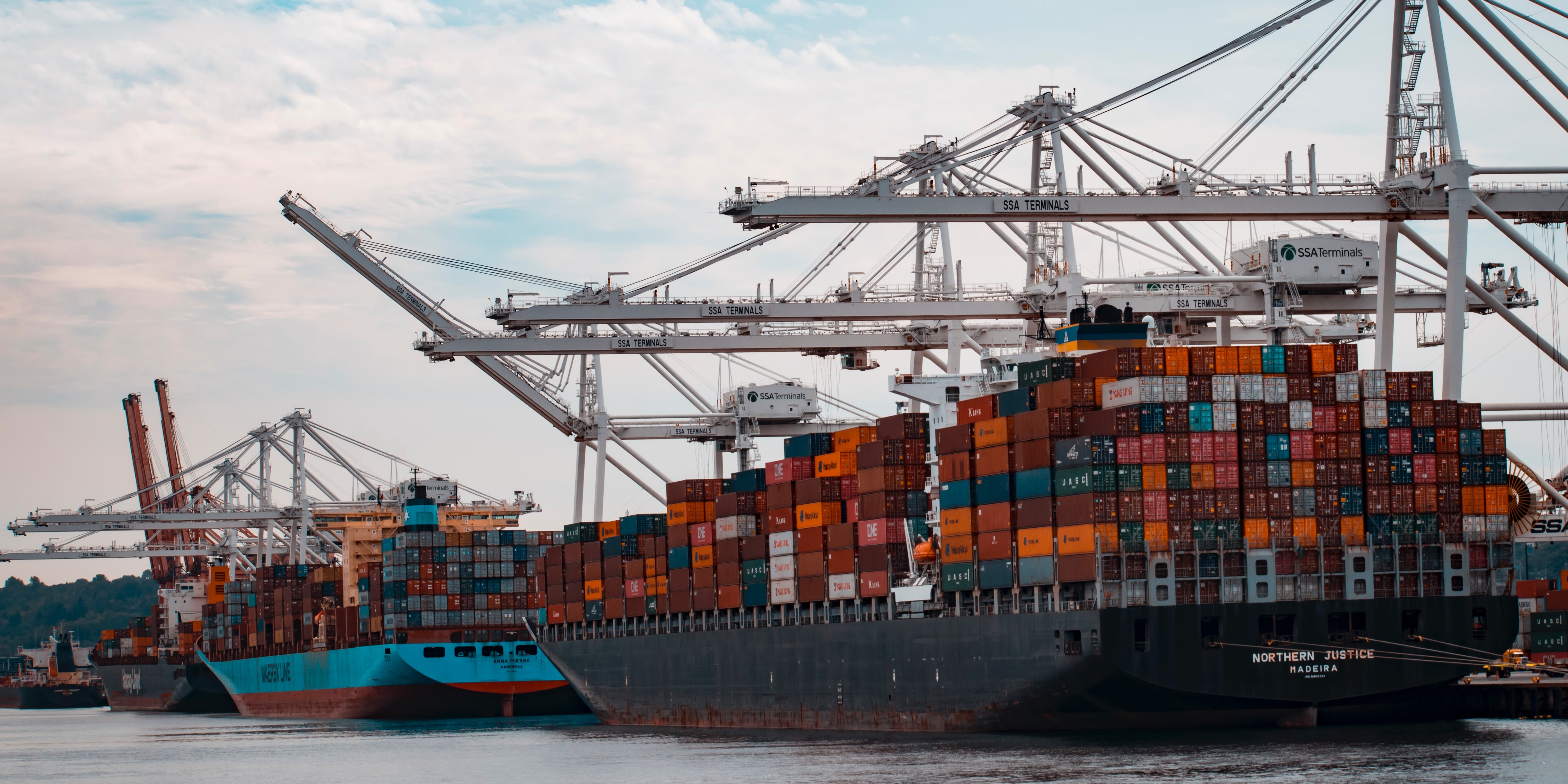How To Drive Profits Through Untapped Markets During A Recession.
ClickThrough's Head of International, Alison Booth, tells us how to increase your profits through untapped markets during a recession.
Read moreClickThrough's international marketing expert, Alison Humphries, talks us through the impact of the pandemic on luxury retailers and how planning for the upcoming Black Friday period may be more challenging than ever before.
What's new, important and interesting in the world of international marketing? This week we look at the adaptation luxury brands will have to make to grow their sales post-pandemic, the rapid growth Western European markets are seeing in online sales, how Japan-UK post Brexit trade deals could look and top recommendations to consider when it comes to digital planning for the Black Friday period.
According to a lockdown report from Econsultancy, luxury retailers are struggling with the hefty rent charges in prominent locations like New York’s Fifth Avenue due to the lack of in-store revenue. Many brands like Valentino are finding it difficult to escape costly rental contracts for premises that have now become impractical in light of the changes to consumer buyer behaviour.
People are no longer in a position to touch and interact with the products as they previously could, and the combination of the fall in footfall from people (who are now working from home) and the lack of inbound tourism from top revenue driving markets like China will put a serious dent in sales.
BCG forecast luxury retail sales to fall by 25% this year, with retailers like Burberry, who are seeing this come into fruition, seeking to save costs through making heavy job cuts.
Naturally there has been a pivot towards eCommerce to capture the sales that are now made online, as opposed to offline. However, many luxury brands are on a back foot when it comes to aligning the offline buyer experience with online and are facing tough competition from pure play multi-brand eCommerce sites like Net A Porter who have spent years honing their approach to personalisation and customer service.
Focusing on product curation and convenience to incentivise engagement and loyalty will be critical to survival, looking at using digital to enhance the in store experience through tactics such as appointment bookings and virtual personal shoppers.
The lack of demand for luxury fashion items such as dresses and bags has resulted in a strong requirement for product adaptation. Dior have embraced this through partnering with Nike to offer a selection of ready to wear sports clothing inspired by NBA Champion Michael Jordan, which capitalises on the requirement for comfortable, fashionable sportswear. Other brands have introduced face masks as a new product line to promote the importance of wearing these to maintain safety.
The key learnings are to:
eMarketer emphasise that retail eCommerce in Western Europe is expected to rise more swiftly than initially anticipated. Although overall retail is anticipated to decline by 9.9%, initial forecasts of a YoY rise in eCommerce sales of 8.8% has been uplifted to 16.9%.

Forecasts have been revised to an online spend of $498.32 billion, which is an anticipated increase of $71.94 billion YoY – $10.83 billion higher than the original forecast. This may deflate as brick and mortar stores open in 2021. However, this increase has accelerated the growth of online sales, which were initially expected to be 11% of total retail sales in Western Europe and have now been increased to an anticipated 13.2%.
The fastest growing markets include Spain, with a forecasted uplift of 22.9% in eCommerce retail – one of the fastest growing rates in the world. The Netherlands follows suit at 21.9% and Italy at 20.5%. The UK and the Nordics are likely to see slightly lower growth at 14.7% and 16.2% respectively.
eMarketer estimate that 66.9% of the Western European population will be digital buyers by the end of this year, up from 64.9% the previous year.
Institute of Export & International Trade report on the first imminent post-Brexit trade agreement between the UK and Japan.
Discussions focused on determining a trade deal between the UK and Japan began in June 2019, with Japan seeking a quick deal to be decided by July 2020. If momentum slows and a deal is not secured and ratified by the beginning of 2021, the UK-Japan deal would revert to being governed by the WTO rules.
The FT report that there is room for negotiation for the talks to continue into August, as the July deadline looks set to be missed.
The UK is keen to push for further enhancements to the deal to reduce regulatory barriers to services and investment.
Japan has recently set the pace for trade agreements, counting the EU deal and the Comprehensive and Progressive Agreement for Trans-Pacific Partnership (CPTPP) as a recent success.
Japan was previously a closed off market for global trade pre-World War II, but has since become a market leader in electronics and automotive. It is now the third largest global economy and the UK’s 13th largest export market in 2017, according to the World Economic Forum.
Google hypothesise how holiday shopping could change considering the impact of the pandemic. A third of US customers participating in a survey carried out by Google indicated that they will not be shopping in store this Black Friday, and half of the respondents envisage changes in the way that they will shop over this period.
Black Friday planning will consequently be more challenging and the requirement for a swift response will be paramount.
Online shopping has traditionally been the dominant channel for the Black Friday period, with 58% of last year’s respondents purchasing online. This is anticipated to see a steep increase as 75% of this year’s respondents indicate that they are more inclined to browse for gifts and shop online.
Capitalising on channels like free product listings on Google Shopping and Search in the US, optimising websites for speed and user experience and “Buy on Google” with a no commission fee will help businesses to increase their online presence.
Accurate inventory information is vital as 67% of respondents said they will confirm online that an item is in stock before going in store to make a purchase. As a result, “near me” searches have increased by 100% YoY. Local inventory ads are also an effective way to disseminate this information to the user.
Meanwhile 66% of respondents plan to show with local, small businesses, who can use Local campaigns as an effective promotional tool.
Safety is at the forefront of consumers’ minds, so services like contactless shopping, click and collect and curbside pickup will be a key consideration for purchase. Equally, 70% of the survey respondents plan to shop earlier to avoid crowds, and 80% seek to consolidate their shopping into fewer trips. Remaining flexible to respond to the changing preferences of consumers with regards to feeling safe will be a key to success over the holiday period.
Focusing on aligning the experience with current expectations and delivering the required information at the right time should underpin promotional planning for the holiday period.
If you would like to discuss any of the international marketing news in this update, or you're wondering how our international marketing services may work for your business, get in touch with our experts today.
More articles you might be interested in:

ClickThrough's Head of International, Alison Booth, tells us how to increase your profits through untapped markets during a recession.
Read more
Welcome to the latest round-up of all things digital. This is where we look at the latest updates in the world of PPC, SEO, Content and International...
Read more
Find out more about the latest updates in digital marketing. Featuring key updates from Google, demystifying meta descriptions, and checking in on...
Read more
Episode eight of The Assorted Digital Ramblings podcast is now out! Learn more about International Marketing with guest Alison.
Read more
In this week's International Marketing News, Andrea takes us through personalisation and privacy in retail and much more. Read on.
Read more
In this week's International Marketing News, Andrea takes us through new .au domain extensions, Bitcoin ATMs and more. Read on.
Read more
Join Andrea Diaz for this week's International Marketing news, covering walled garden investigations and more.
Read more
In the International Marketing News this week, Andrea Diaz takes us through the importance of implementing omnichannel strategies in 2022, Huawei...
Read more